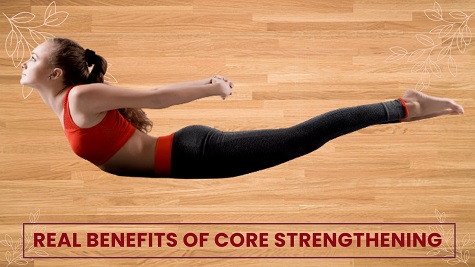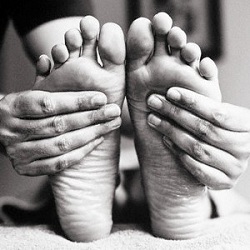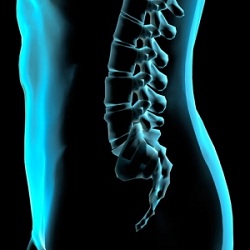Alternative Therapies
- Alternative Medicine
- Access Bars
- Acupressure
- Acupuncture
- Ancient Magnetism
- Angel Healing
- Ayurveda
- Bach Flower Remedies
- Breathwork
- Cosmetic Acupuncture
- Crystal Healing
- Cupping Therapy
- Emotional Freedom Technique (EFT)
- Ergonomics
- Face Reading
- Fengshui
- Geopathic Stress Graphology
- Heal Your Life
- Holistic Solutions
- Holy Fire Reiki
- Homeopathy
- Hypnotherapy
- Inner Child Therapy
- Jesus Reiki
- Jikiden Reiki
- Karuna Reiki
- Lama Fera
- Lavender Flame Reiki
- Law of Attraction
- Manual Therapy
- Meditation
- Melchizedek Method
- Motivational Counseling
- Mudra Healing
- Nakshatra Energies
- Naturopathy
- Neuro Linguistic Programming (NLP)
- Panchakarma (Ayurveda)
- Panchkarma Holistic Healing - Mind Control
- Past Life Regression
- Physiotherapy
- Pranic Healing
- Pyramids
- Reiki
- Rudraksh
- Silva Mind Control Method
- Sujok therapy
- Tarot
- Theta Healing
- Unani Medicine
- Yoga
Diseases & Conditions
- Acne & Pimples
- Allergies
- Arthritis
- Asthma
- Behavioural Disorders
- Dandruff
- Diabetes
- Emotional Problems
- Gallstones
- Gastritis
- Hairloss
- Heart Diseases
- Hormonal Problems
- Hypertension
- Immune Disorders
- Infections
- Infertility
- Jaundice
- Kidney Disorders
- Liver Disorders
- Menstrual Disorders
- Migraine
- Neck & Back Pain
- Obesity
- Osteoporosis
- Peptic Ulcer
- Prevention
- Prostate Problems
- Psoriasis
- Sexual Dysfunctions
- Sinusitis
- Sleep Disorders
- Skin Diseases
- Stress
- Thyroid Disorders
- Ulcerative Colitis
- Urinary Infections
General Wellness
Best Physiotherapists In Sharjah
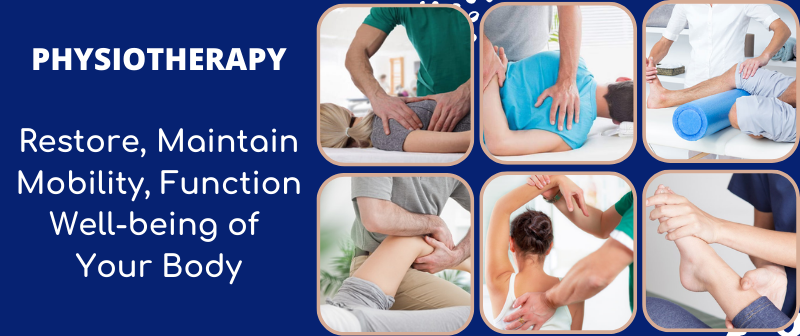
Pelvic Floor Strengthening
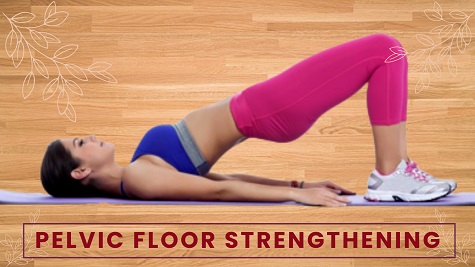
Have you heard of the pelvic floor?
The pelvic floor includes a group of muscles and ligaments that form a "floor like" structure that supports key organs. These include the bladder and bowels (and uterus for women).
A strong pelvic floor is important for preventing issues like urinary incontinence for men and women (the involuntary loss of control of urine) and pelvic organ prolapse.
Pelvic organ prolapse occurs when the muscles and tissues supporting the organs (i.e. the pelvic floor) weaken. This can be caused by various issues including childbirth, aging, chronic cough, hormonal changes such as menopause, excessive straining due to constipation, constant lifting of heavy objects, obesity and pregnancy.
How To Strengthen Your Pelvic Floor Muscles
All men and women should regularly exercise the pelvic floor muscles. It is highly recommended that women do pelvic floor exercises daily to prevent weakness and, if needed, to improve the strength of the pelvic floor muscles.
As with any muscle, consistently performing the right exercises always helps. Gentle exercises (like walking regularly) can also help strengthen the pelvic floor muscles.
Identifying and Engaging The Right Muscles
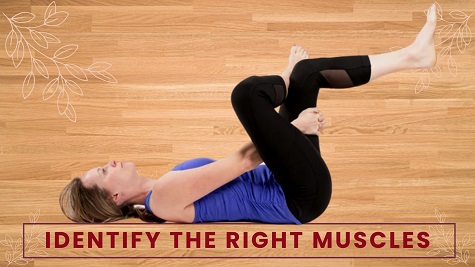
Step one = Identify the right muscles
In order to identify where your pelvic floor muscles are, you want to tighten your muscles in that area. Identifying the muscles correctly is the first step towards muscle engagement and increased control.
Step two = Learn to engage (contract) the pelvic floor muscles properly
Contracting the muscles is not difficult, but you want to be sure you are doing it correctly.
Begin by contracting the muscle upward and inward. The best way to think about this is - imagine you are going to the bathroom. You want to stop yourself midway (or midstream) by actively contracting your pelvic floor muscles.
Step three = Pace yourself
You need to train your pelvic floor muscles just as you would any other muscle group, through repetition.
If you have any questions, please get in touch with one of our skilled physical therapists and we will be happy to steer you in the right direction.
Kegels For Pelvic Pain
Anyone who’s ever experienced pelvic pain or pelvic organ prolapse will tell you it's a frustrating and painful ordeal.
If you or a loved one suspect pelvic floor dysfunction, call your doctor for an immediate check-up.
If your doctor recommends "shaping up" of the pelvic floor muscles, you might want to consider "Kegel Exercises" (most women have heard of Kegels).
Experts agree that Kegel exercises are the most effective way to tone and strengthen the pelvic floor muscles. According to several studies, women after the age of 35 lose approximately 5% of their body’s muscle mass every 10 years. This loss of muscle mass affects every aspect of a woman's body, including the pelvic region.
So how can physical therapy help women (and men) tone and strengthen muscles, especially in the pelvic area?
Physical therapists can design a full pelvic workout, including exercises called "Pelvic Clocks" and "Kegels" to strengthen the muscles in the pelvic region.
To find out how you can benefit from these and other exercises, call our office today to schedule an appointment. Let us help you regain control of your pelvic floor muscles. Don't wait until you suffer the symptoms of pelvic floor weakness to take action. Call us today and take preventive measures.
Note: Please do not start any exercise routine without the consent of your physician.
The Real Benefits Of Core Strengthening
- Does Back Pain Go Away “On Its Own”?
No matter what activity you participate in, your "core" is the center of all muscle activity. Your core is much like the middle link to a thick, sturdy chain. The upper part of the chain is your upper body; the bottom part of the chain is your lower body and the two are connected at the center. A stronger core will not only give you a stronger foundation for your upper and lower body, it will also enhance your stability and balance.
Everything you do, whether you know it or not, uses your body’s core. Let’s take a look…
Recreational activities and sports - Every single sport (football, baseball, tennis, golf and even skiing), depends on your body’s core for strength and stability.
Everyday movements - Simple movements like getting in/out of bed or emptying the dishwasher require the use of your core muscles.
Work/job tasks - Any job you perform relies on the core muscles for stability. There are some jobs (especially ones that involve repetitive lifting) that depend on core strength and stability more than others.
Balance and stability - Since your core is truly the "center" of your body and supports your body’s upper and lower extremities and spine, it is used in every single functional task you perform.
A healthy back - Back pain can be excruciating and tends to limit many of your activities. It is estimated that 4 out of 5 people will experience back pain at some point in life. Strengthening the core muscles is the "secret ingredient" to keeping your back healthy.
Gardening and housework - Daily tasks like vacuuming, mopping a floor and making a bed all utilize the strength of your core.
Posture - Having a weak core can lead to poor posture, which in turn contributes to back pain.
You can see from the small list above that the core muscles play a vital role in keeping you strong and injury free.
Strong To The Core
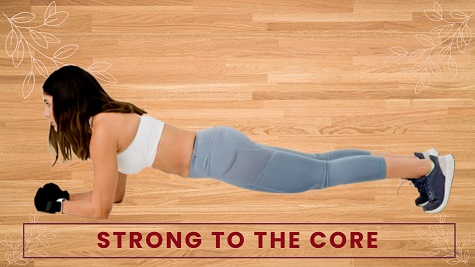 The benefits of a strong core include:
The benefits of a strong core include:
Improved balance and stability for daily activities and recreational activities - core exercises train the muscles of your abdomen, hips, pelvis and lower back.
Increase ease of performance with daily activities - a stronger core can make many things easier and pain free. Examples include swinging a golf club, reaching up to grab a plate in your kitchen cabinet and picking up your child.
Increased confidence - the stronger you are, the more you can do and the more confident you feel.
Pain relief and strength - Relieve lower back pain and prevent future back pain.
Physical Therapy For Your Core
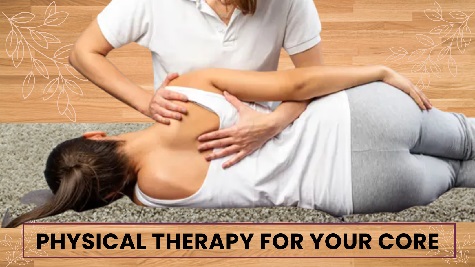 It is not as hard to build core strength and stabilization as you may think. You don't need any specialized equipment to target the core muscles. All you need is a good physical therapist.
It is not as hard to build core strength and stabilization as you may think. You don't need any specialized equipment to target the core muscles. All you need is a good physical therapist.
Your physical therapist will be able to not only create an exercise routine specifically for you, but will also be able to monitor your progress. Our staff is highly trained in identifying muscle imbalances and weaknesses. This information is used to craft an individualized program based on your preferences, needs and goals.
Call us today to see how we can make your daily activities easier by facilitating the strength of your core muscles. We look forward to showing you what physical therapy can do for your core.
Causes and Prevention of Back Pain
- Does Back Pain Go Away“On Its Own”?
Did you know that 80% of all individuals suffer from low back pain at some point in their lives? At times, the cause can be a specific injury. In other cases, the cause cannot be accurately determined. Low back pain is the second most common reason for a visit to the doctor's office (the first is upper respiratory tract infections).
What Causes Low Back Pain?
The spine is a complex structure made up of bones, joints, ligaments and muscles. It can be injured in several ways. It’s possible to sprain ligaments, muscles or get a bulging or herniated disc. These are just some of the factors that can lead to low back pain. There can be times when the simplest movement (bending down to pick up a pencil from the floor, picking up your child) can lead to severe pain.
Will My Back Heal Itself?
Unlike muscles and bone, the lower back is a complex part of the body that does NOT "heal" on its own. It is critical to identify the underlying cause (which is where we help you) so that you can get long lasting relief.
What If I Suffer From Long-Lasting Back Pain?
at home or work. Pain can also confine you to staying indoors. It can substantially limit your social life. That’s not all. Many individuals cut back on physical activity. This leads to muscle weakness, which causes more pain and weakness. This triggers a vicious cycle that grows worse with each passing day.Persistent, chronic pain is more than just an inconvenience. It can make daily activities painfully challenging and limit your ability to do the things you enjoy. You may find it difficult to play with your children and complete tasks Your physiotherapist can help you break this painful cycle! In most cases, we can help individuals with long-lasting back pain feel improvement shortly after starting physical therapy.
If your back pain is not resolving quickly, call us today.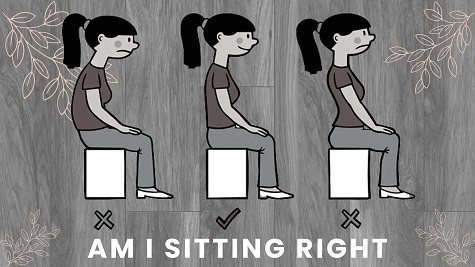
Can I Prevent My Back Pain From Returning?
Here are some tips from us to keep your spine healthy and pain-free:When lifting an ob-ject, bend at your knees, not your back. Be sure to squat with the correct technique to pick up an ob-ject. Keep your back straight and keep the ob-ject close to your body.
• Avoid twisting your body while lifting anything.
• When sitting, make sure your feet are flat on the floor and your back is straight.
• Avoid sitting for long periods of time. If you must, make sure to stand up and stretch frequently.
• The right footwear can protect your spine. Flats or low heels are safer than heels.
• Avoid sitting on the couch for too long, since it de-conditions the muscles surrounding your spine.
• Exercise regularly. Increasing muscle strength with the right exercises (which we can teach you) will minimize pain and injury.

Don’t neglect your low back, even if you are pain free. We can teach you several preventative exercises and conduct a postural evaluation to determine if you may be at risk for back pain.
What are you waiting for? Schedule an appointment with us today so we can show you how to protect your spine. It’s time to get you 'back' to pain-free living. - Does Back Pain Go Away“On Its Own”?
